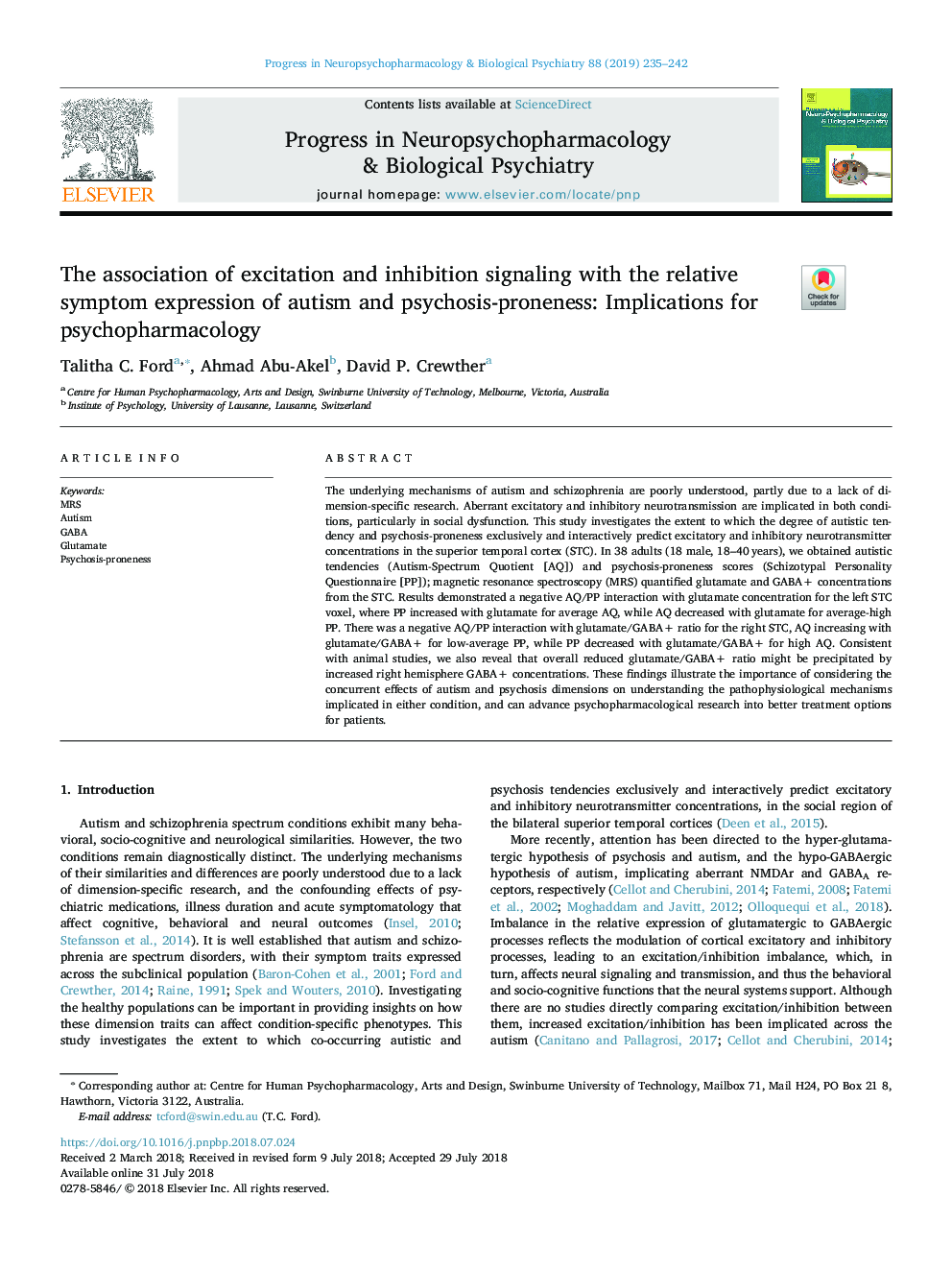| Article ID | Journal | Published Year | Pages | File Type |
|---|---|---|---|---|
| 8537159 | Progress in Neuro-Psychopharmacology and Biological Psychiatry | 2019 | 8 Pages |
Abstract
The underlying mechanisms of autism and schizophrenia are poorly understood, partly due to a lack of dimension-specific research. Aberrant excitatory and inhibitory neurotransmission are implicated in both conditions, particularly in social dysfunction. This study investigates the extent to which the degree of autistic tendency and psychosis-proneness exclusively and interactively predict excitatory and inhibitory neurotransmitter concentrations in the superior temporal cortex (STC). In 38 adults (18 male, 18-40â¯years), we obtained autistic tendencies (Autism-Spectrum Quotient [AQ]) and psychosis-proneness scores (Schizotypal Personality Questionnaire [PP]); magnetic resonance spectroscopy (MRS) quantified glutamate and GABA+ concentrations from the STC. Results demonstrated a negative AQ/PP interaction with glutamate concentration for the left STC voxel, where PP increased with glutamate for average AQ, while AQ decreased with glutamate for average-high PP. There was a negative AQ/PP interaction with glutamate/GABA+ ratio for the right STC, AQ increasing with glutamate/GABA+ for low-average PP, while PP decreased with glutamate/GABA+ for high AQ. Consistent with animal studies, we also reveal that overall reduced glutamate/GABA+ ratio might be precipitated by increased right hemisphere GABA+ concentrations. These findings illustrate the importance of considering the concurrent effects of autism and psychosis dimensions on understanding the pathophysiological mechanisms implicated in either condition, and can advance psychopharmacological research into better treatment options for patients.
Related Topics
Life Sciences
Neuroscience
Biological Psychiatry
Authors
Talitha C. Ford, Ahmad Abu-Akel, David P. Crewther,
